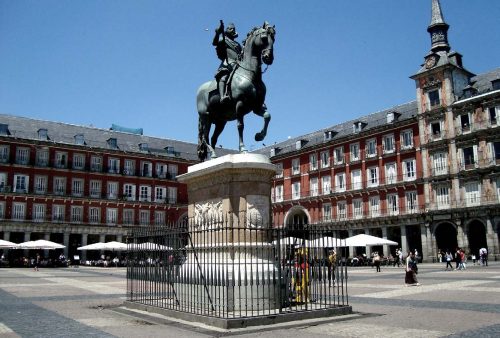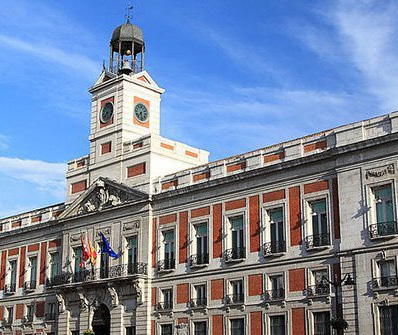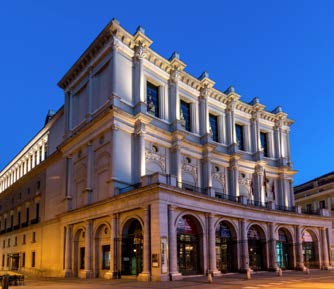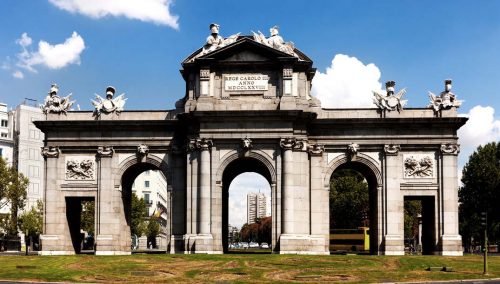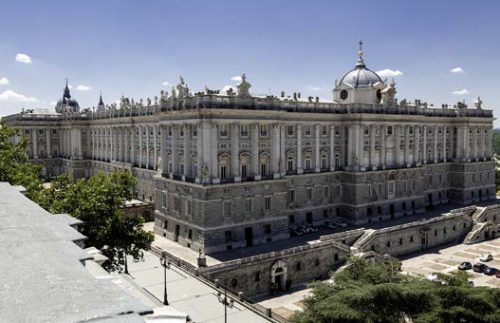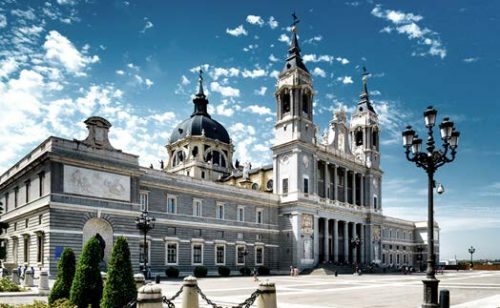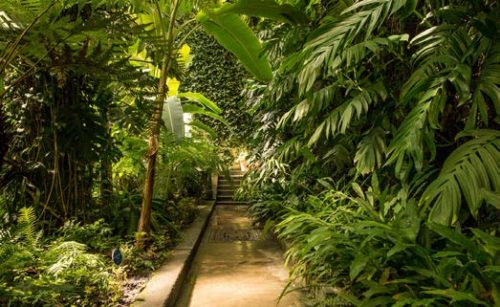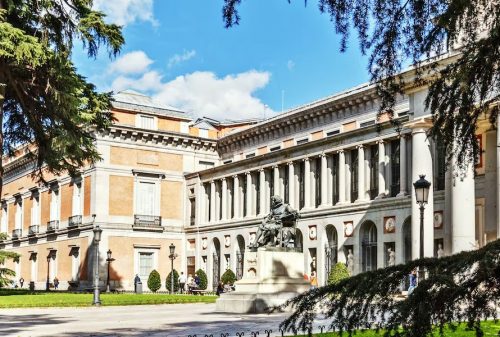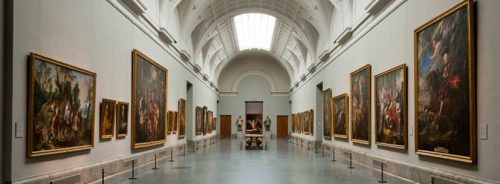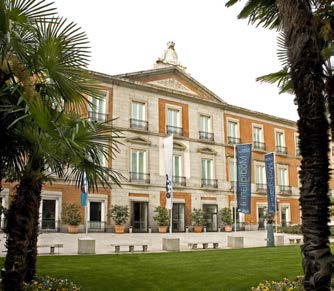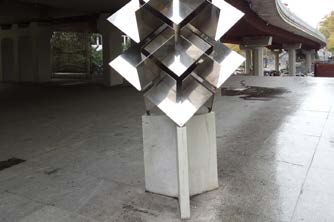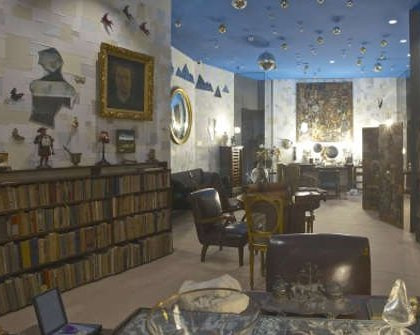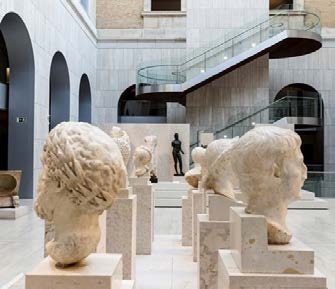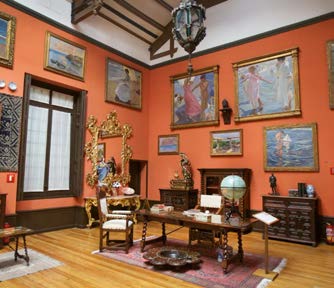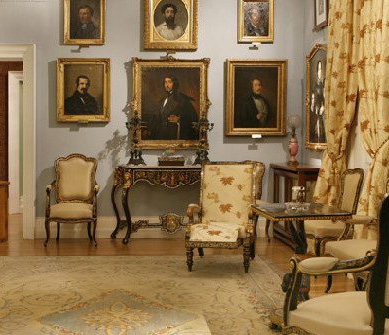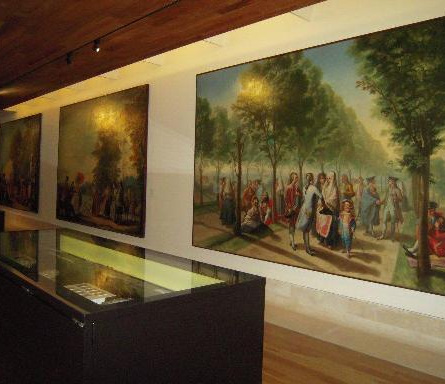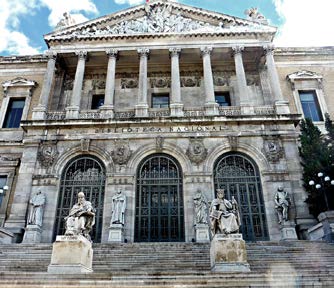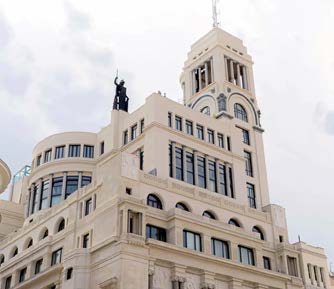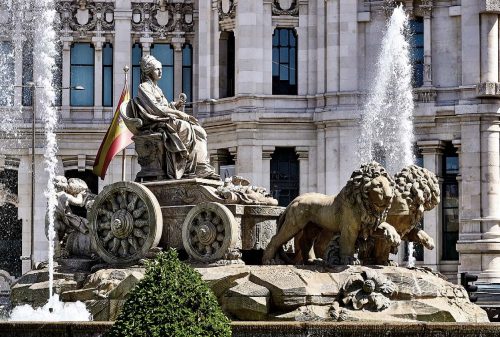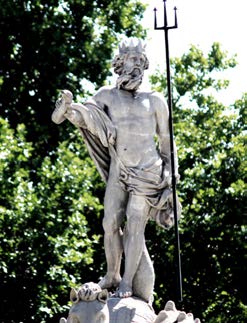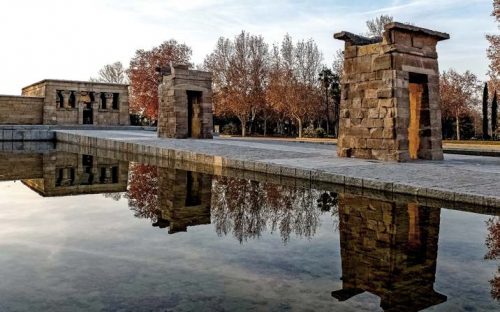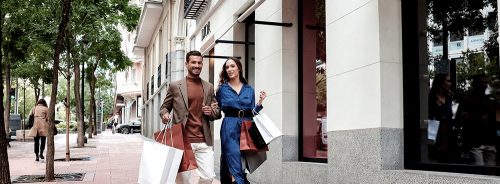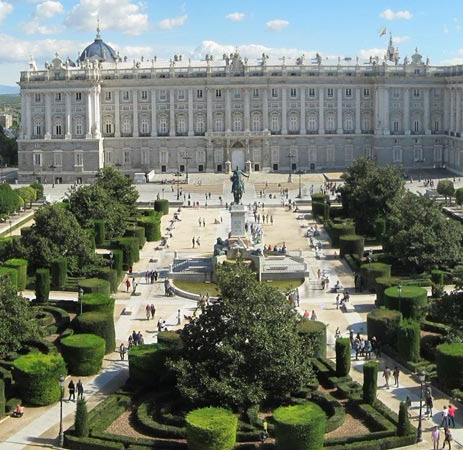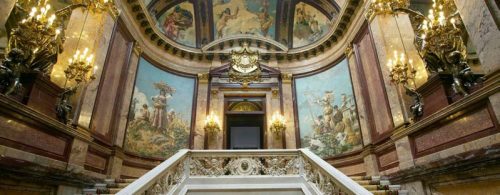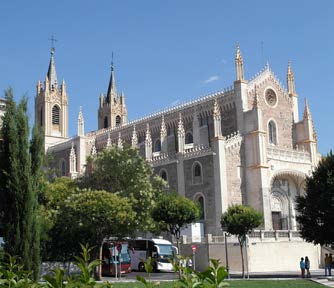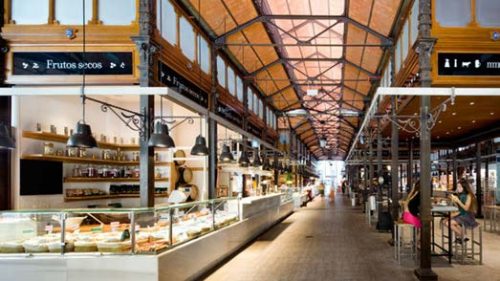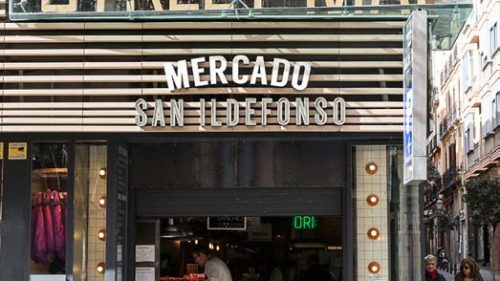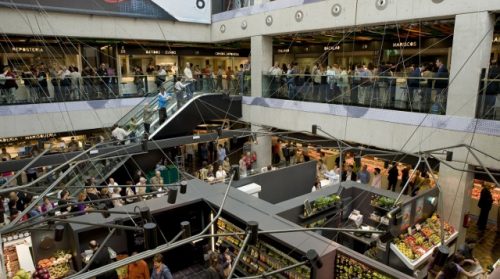What to see in Madrid?
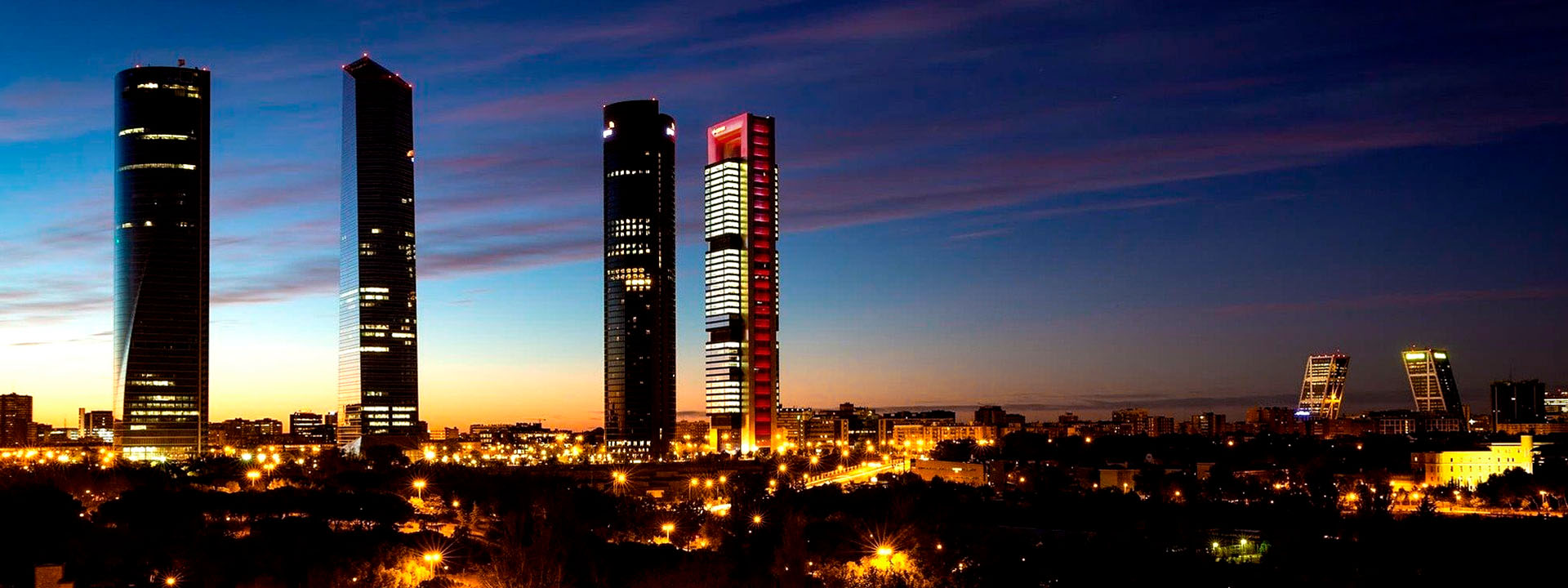
Discover the most beautiful places in Madrid
The capital of Spain is a cosmopolitan city that combines the most modern infrastructures with its position as an economic, financial, administrative and service centre.
With an immense cultural and artistic heritage, the legacy of centuries of exciting history, Madrid is a city open to all those who wish to discover it, where a multitude of cultural, gastronomic, business, leisure and entertainment options are combined, making it one of the most solid and diversified tourist attractions in Europe and the world. There is probably no city like Madrid with so many exciting things to do and see and yet so close to each other.
DISCOVER MADRID
1. EMBLEMATIC SPACES OF MADRID
3. MUSEUMS AND CULTURAL CENTERS
- Art Walk
- Prado Museum
- Reina Sofia National Museum and Art Center
- Thyssen-Bornemisza Museum
- Public Art Museum – Puente Juan Bravo
- Museum of Contemporary Art of Madrid
- National Archaeological Museum
- Sorolla Museum
- Romanticism Museum
- Madrid History Museum
- National Library
- Fine Arts Circle
1. Emblematic Spaces
Plaza Mayor, Main Square
One of the main squares in Spain is located in the heart of Madrid. A meeting point for locals and tourists alike, it is home to the famous steak market that is held every Sunday.
This rectangular square is located in the heart of Hapsburg Madrid. This space designed for civic life was commissioned by King Philip III to the architect Juan Gómez de Mora. The Plaza was completed in 1617 and since then it has undergone many transformations due to successive fires. Its current neoclassical appearance is due to the architect Juan de Villanueva, who radically transformed the complex. However, the brick buildings, the nine entrance gates, including the famous Arco de Cuchilleros, the Casa de la Panadería and the equestrian statue of Felipe III have been preserved.
Centuries ago, the Plaza Mayor was home to markets, bullfights, popular spectacles and acts of faith. Today it is one of the most popular tourist attractions in Madrid, where locals and visitors alike enjoy the terraces under the porticoes or buy stamps and old coins in the numismatic and philatelic shops located in the arcades.
Puerta del Sol
The nerve centre of the city. Its main attraction is the clock that chimes to mark the beginning of the year, “El Oso y el Madroño” and Kilometre Zero.
Originally, the Puerta del Sol was one of the entrances to the wall that surrounded Madrid in the 15th century and the name comes from a sun in low relief that was carved into it. It was an outer point of the city, although due to its location and the growth of Madrid towards the east, it gradually became a key place for the exit to the surrounding area. Today it is the centre of Spain, as it is here, on the ground, opposite the clock of the Casa de Correos, that Kilometre 0 is located, from where the six national roads start.
On the façade of the “Casa de Correos” Post Office are plaques paying homage to those who fell in the uprising of 2 May 1808 against Napoleon’s troops and to those who helped the victims of the 11M attacks.
Royal Theatre
Popularly known as “El Real”, it is among the leading international opera houses, hosting the best lyric and stage artists of the moment.
It opened its doors for the first time on 19 November 1850, and operated for 75 years. It was then closed between 1925 and 1997, when it reopened after ten years of renovation work.
It was ordered to be built by King Ferdinand VII, but it was not until 1850, under the reign of Isabel II, that it was inaugurated with Donizzeti’s La Favorita. The architect Antonio López Aguado was responsible for the original hexagonal design, whose main façade overlooks the Plaza de Oriente.
Puerta de Alcalá
The Puerta de Alcalá is today one of the city’s emblematic monuments. When Charles III ordered it to be built, it was one of the five access gates to the city of Madrid.
Its current appearance dates from 1778 and is the work of the Italian architect Francisco Sabatini, who also worked on the Royal Palace. King Carlos III, known as “the best mayor of Madrid”, ordered it to be built to replace another one that was already in poor condition and which displeased the monarch.
The original gate had three arches and was known as the Alcalá gate because it connected Madrid with the capital of the Henares. In addition, when the gate was part of the walls surrounding the town of Madrid, it had a wrought iron grille that was closed at night to prevent thieves from passing through.
The Puerta de Alcalá that we know today is neoclassical in style and has five openings, three with semicircular arches, which are larger and intended for carriages, and two with lintels, which are smaller and intended for pedestrians. Above the largest bay is an inscription in Latin that reads: ‘Rege Carolo III. ANNO MDCCLXXVIII” (King Charles III. Year 1778). The material used for its construction is granite from Segovia and limestone from Colmenar de Oreja for the decorative elements.
The Puerta de Alcalá has been preserved to this day with hardly any modifications or damage. There are still some traces of shrapnel left on the surface by French troops in 1808 and by the Hundred Thousand Sons of Saint Louis in 1823. It was declared a National Monument in 1976.
Royal Palace
It was once the official residence of the monarchs and today it continues to host official events, such as diplomatic and protocol meetings.
The origins of the palace date back to the 9th century, when the Muslim kingdom of Toledo, concerned about its defence against Christian attacks, built a fortress that would later be used by the kings of Castile. In the 16th century the Alcazar was built on the same foundations.
A fire on Christmas Eve 1734 reduced it to ashes. It was not long before Philip V ordered the construction of a new palace on the same site. The building, which was completed between 1738 and 1755, was designed in stone and brick, discarding the use of wood and flammable materials. Charles III was the first monarch to establish his residence, in 1764.
Inside you can see frescoes, and a tour of the different rooms reveals the legacy of artists such as Giaquinto, Tiepolo, Mengs, Bayeu and Maella.
Almudena Cathedral
Consecrated in 1993 by John Paul II, in honour of the patron saint of the city, the Virgin of the Almudena, it has been said to be the oldest new cathedral in the world. The differences in the colour of the stone reflect the stages of construction.
Controversy has always accompanied the Almudena Cathedral, mainly due to the mixture of styles it presents, neoclassical on the outside, neo-Gothic on the inside and neo-Romanesque in the crypt, as a result of the various modifications in its projects.
Its cloister was completed in 1955, and the façade five years later, although it was not definitively inaugurated until 1993 by Pope John Paul II.
Unlike other cathedrals, with an east-west orientation, the Almudena Cathedral has a north-south orientation, the result of its conception as an integral part of the Royal Palace of Madrid.
The founder of the Neocatechumenal Movement, Kiko Argüello, was commissioned to paint a “Mysteric crown” in the apse of the Cathedral, the most important moments in the life of Christ.
Above the paintings, seven stained glass windows dedicated to the voice of God were installed, with the noun “word” translated into different languages: Latin, Greek, Hebrew, Syriac, Cyrillic and Spanish.
The frescoes retain a Byzantine influence, while the stained-glass windows are purely abstract in style.
2. Parks & Gardens
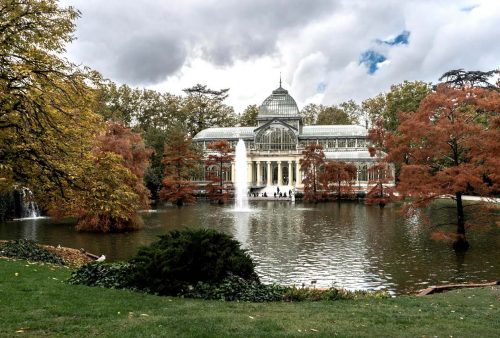
Retiro Park
It is the lungs of the city, as well as a classic place for strolling where locals and visitors alike come together.
Since the end of the 19th century, as a public park, El Retiro has been used as a setting for various international exhibitions. As a testimony to these, there are such emblematic buildings as the Palacio de la Minería, popularly known as the Palacio de Velázquez, and the Palacio de Cristal, undoubtedly the most outstanding place in the gardens, which together with its artificial lake was built in 1887 on the occasion of the Philippine Islands Exhibition, where various species of flowers from this site were exhibited.En los años treinta y cuarenta aparecen nuevos jardines ejecutados por el jardinero mayor Cecilio Rodríguez que diseñó y construyó la Rosaleda y los jardines de Cecilio Rodríguez donde se encuentra el pabellón.
Locals and visitors come together in this park, which at weekends and on public holidays gets animated by the performances of singers, musicians, puppeteers and artists who line up in front of the lake.
Among all the fountains, the Fallen Angel fountain, whose main statue represents the devil, stands out.
Botánic Garden
It houses more than 30,000 species from all over the world and has been managed by the CSIC since 1939. To make sure you don’t miss any of the details, follow one of its self-guided tours. The main entrance is opposite the Prado Museum, in Plaza de Murillo.
The botanical gardens are descended from the orchards and convent gardens of the Middle Ages, which evolved during the Renaissance to become university gardens.
Founded in 1755 by order of Fernando VI, originally located on the banks of the Manzanares River, it had more than 2,000 floors. Twenty years later King Carlos III commissioned the architects Juan de Villanueva and Francesco Sabatini to move it to its current location, where it was inaugurated in 1781.
3. Museums &Cultural Centres
Paseo del Arte
The Art Promenade is made up of the virtuous triangle of museums comprising the Prado Museum, the Reina Sofia National Art Centre Museum and the Thyssen-Bornemisza Museum, along with several others in the surrounding area.
Located in a beautiful and emblematic area of Madrid, the “Paseo del Prado” area, there are a series of museums, exhibition halls, galleries and monuments that undoubtedly make up one of the great attractions of the city of Madrid, which no visitor should miss.
Starting from Atocha Station, you can enjoy a pleasant walk through its beautiful gardens and contemplate a monumental complex that shines with its own light, the fountains of Cibeles and Neptuno, buildings such as the Bank of Spain and the Madrid City Hall (former Palace of Communications) and monuments such as the Puerta de Alcalá.
The cultural offer of the area is completed by other museums such as the National Museum of Anthropology, the Naval Museum, the National Museum of Decorative Arts, the CaixaForum or the recently reopened National Archaeological Museum. Not forgetting the Royal Botanical Garden which, despite not being a museum, forms part of the historical and natural heritage of the Paseo del Prado.
It is no coincidence that the “Paseo del Arte” is the space in the world with the highest density of works of art.
Museo del Prado
Es una de las mejores pinacotecas del mundo con más de 8.000 pinturas, 5.000 dibujos, 2.000 grabados, 700 esculturas y otros muchos objetos de gran valor. Contiene colecciones que recorren la historia de la pintura, desde murales románicos del siglo XII hasta obras de finales del siglo XIX. Destacan una gran exposición de pintores hispanos como Ribera, Zurbarán, Velázquez o Goya y las colecciones de artistas europeos como El Greco, Tiziano, Rubens o El Bosco.
The building where the Prado Museum stands today was designed in 1785 as the Natural Sciences Cabinet by the architect Juan de Villanueva. It was ordered to be built by King Carlos III. It was not until 19 November 1819, under the reign of Ferdinand VII, that it opened its doors to the public as the Royal Museum of Painting and Sculpture.
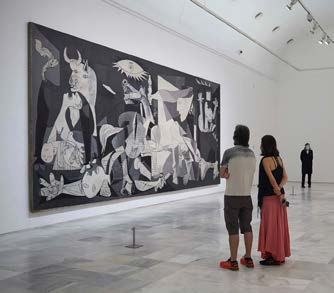
Museo Nacional Centro de Arte Reina Sofía
Since its opening in 1990, it has aimed to present the general lines of contemporary Spanish artistic work in dialogue with the international context. To this end, it has a heritage of more than 30,000 works produced between the end of the 19th century and the present day. The centrepiece of its collection is Pablo Picasso’s Guernica, accompanied by works by artists of the stature of Joan Miró, Salvador Dalí, Juan Gris, Robert Delaunay, Georges Braque, Yves Klein, Francis Bacon, Richard Serra, Sol Lewitt and Marcel Broodthaers.
Thyssen-Bornemisza Museum
The Museum, located in the Palace of the Duke of Villahermosa, was opened to the public in 1992. With three floors, the museum traces the history of Western painting from the 13th to the 20th century. Renaissance, Mannerism, Baroque, Rococo, Romanticism, Pop Art… are all represented in the almost 1,000 works on display.
The management of Baron Heinrich Thyssen-Bornemisza, led the collection to focus on the acquisition of 19th and 20th century works within the framework of currents such as Impressionism, Post-Impressionism, Fauvism, German Expressionist movements, the avant-garde and post-war painting.
Publia Art Museum – Puente Juan Bravo
This 320m long and 16m wide bridge, inaugurated in 1970, immediately brought with it the project to house an open-air museum of modern sculpture on its lower level. The artist Eusebio Sempere, who was in charge of designing the railings, was one of the main ideologists and promoters of converting an urban space of common use into a rest area capable of bringing the public closer to Spanish abstract art.
Museum of Contemporary Art of Madrid
It is located in the historic Cuartel de Conde Duque. Its collection consists of painting, sculpture, photography, drawing and graphic works ranging from the historical avant-garde of the first third of the 20th century to recent times.
With the new installation, the aim is to create a permanent focus of attention on Madrid’s contemporary artistic heritage, with an extensive cultural programme, completing the panorama of contemporary art spaces in Madrid and the historic museums of our city.
National Archaeological Mesum
After its reopening, the MAN has become one of the most visited museums in the city. This museum was founded in the time of Isabel II, specifically in 1867, to conserve and exhibit all the archaeological, decorative arts, numismatic and ethnographic materials collected by the Spanish Crown.
Its heritage has grown over time. Since 1895, its headquarters have been located in the Palace of the Library and Museums, a neoclassical building designed by the architect Francisco Jareño de Alarcón.
Sorolla Museum
Museum is a house-museum that still retains much of its decoration. It was inaugurated in 1932 at the request of the painter’s widow, who gave the building to the State and made a generous donation for the creation of a museum in memory of her late husband, Joaquín Sorolla.
The Sorolla Museum’s collection is made up of works by the painter himself and various objects he collected during his lifetime.
Romanticsm Museum
The former palace of the Marquis of Matallana, built in 1776, houses an interesting collection of paintings, furniture and decorative arts from the 19th century, which recreates the daily life and customs of the upper bourgeoisie during Romanticism. The focal point of the palace is the ballroom, a room where luxury and ostentation are the most striking features.
Its collection includes works by Goya, Esquivel, Madrazo, Alenza and the Bécquer brothers, ceramics by Sargadelos and Sèvres, among many others.
Museum of Histroy of Madrid
Located in one of the great Baroque buildings of Madrid, the former Hospicio de San Fernando, this space, created as the Municipal Museum in 1929 and renamed the Museum of the History of Madrid in 2007, exhibits one of the best examples of the historical evolution of Madrid and offers an overview of the arts, industries, daily life and customs of its inhabitants since it was elected capital of Spain in 1561 to the present day.
Among its numerous pieces, the most outstanding are the Model of Madrid by León Gil de Palacio from 1830 and the Allegory of the City of Madrid by Francisco de Goya.
National Library
It is the official depository of Spain’s Bibliographic and Documentary Heritage, guarding more than 26 million publications produced in Spain since the beginning of the 18th century.
The building is neoclassical in style, built in the 19th century during the reign of Isabel II, and its façade consists of three entrance arches with iron gates, an upper gallery of Corinthian columns and a carved pediment. On the grand entrance staircase are statues of Alfonso X the Wise and San Isidoro.
Círculo de Bellas Artes
It is organised as a multidisciplinary centre, with a programme that offers content related to the plastic arts, literature, philosophy, film, the performing arts and science. The Círculo has a collection of more than 1,000 pieces, including engravings, sculptures, furniture and paintings, as well as the library that the gallery owner Juana Moró donated to the Art Centre.
Not to be forgotten is its restaurant and terrace, highly recommended at any time of the year.
4. Other Places of Interest
Cibeles Fountain
It is one of the most emblematic monuments in Madrid. It represents the Greek goddess of the earth, agriculture and fertility in her chariot pulled by lions. In her left hand she holds the key to the city. It is located in the square that gives it its name.
In this same square are the Bank of Spain building, the Telecommunications Palace, current headquarters of the Madrid City Council, the Linares Palace and the Buenavista Palace. It is the starting point for such emblematic streets as Calle Alcalá, Paseo del Prado, Gran Via and Paseo de Recoletos.
The Cibeles also has a more recreational aspect in the sporting sphere, as Real Madrid fans have turned it into a centre for celebrating the victories of the white team.
Neptuno Fountain
It is located on the Paseo del Prado, near the Fuente de Cibeles. Made of white marble, it represents the Roman god of the sea with his trident in his chariot pulled by horses with fish tails that seem to come out of the water.
The fountain was commissioned by King Charles III from the architect Ventura Rodríguez, who created the fountain of Cibeles at the same time.
Debod Temple
his authentic Egyptian temple from the Late Period, which is more than 2,200 years old, is the oldest monument in the city.
Located next to the “Parque del Oeste”, in one of the most beautiful spots in the city of Madrid, from the viewpoint of the gardens it is one of the favourite places for locals and visitors to contemplate the sunset. The viewpoint offers a spectacular panoramic view of the south of the city, from where you can see the “Casa de Campo” in the foreground and in the background, on clear days, you can also see the peaks of the Sierra de Guadarrama.
In 1968 it was donated to Spain by the Egyptian government, in gratitude for the work of the Spanish archaeological mission that collaborated in the rescue of the temples in the Nubian Valley – specifically, in the relocation of the Temple of Abu Simbel – which were going to be flooded by the waters of the Aswan Dam. It was moved stone by stone to its present site around 1972.
This monument, dedicated to the Egyptian gods Amun and Isis, was built by a Nubian king and is the only authentic Egyptian temple that can be visited in our country. A model of the exhibition, which is currently housed inside the temple, tells the story to visitors.
La Milla de Oro
Sólo con recorrer un kilómetro cuadrado se encuentran al alcance las mayores firmas de moda, decoración y joyería. Es la “Milla de Oro”, en el corazón del Barrio de Salamanca. Ideal para ir de compras, para pasear o tomar algo en plan chic.
Joyerías, zapaterías, tiendas de ropa y complementos, todo en el centro de Madrid. Paseando por las calles Serrano, Ortega y Gasset, Velázquez, Lagasca, Ayala y Claudio Coello, se encuentran las firmas más prestigiosas nacionales e internacionales. En ellas, también hay tiendas de antigüedades y galerías de arte que harán que el día de compras sea perfecto.
Los apasionados de la moda podrán sumergirse en las tiendas de las grandes firmas de moda españolas. Destaca Loewe, una de las firmas de accesorios más reconocidas a nivel mundial que hace la delicia de todo el que entra en ella, Manolo Blahnik, Amaya Arzuaga, Kina Fernández, Adolfo Domínguez, Agatha Ruiz de la Prada, Roberto Verino o Ángel Schlesser que comparten espacio con los principales diseñadores como Chanel, Armani, Valentino o Louis Vuitton.
También disponen de las mejores joyerías, en las que se encuentran las piezas más exclusivas o accesorios a la última en tiendas como Bulgari, Cartier, Tous o Tiffany, que exhiben los más preciados diamantes y brillantes en sus escaparates.
Plaza de Oriente
It is so called because it faces the eastern façade of the Palace. Here you will find the Royal Theatre and magnificent gardens flanked by statues of the kings of Spain and presided over by the equestrian statue of Philip IV.
Halfway between the Royal Theatre and the Royal Palace, it was commissioned by Napoleon’s brother, Joseph Bonaparte, known by his nicknames “Pepe Botella” and “King Plazuelas” for his penchant for demolishing old buildings to build Parisian-style squares. This move, although unpopular at the time, made Madrid a more open city, providing it with a series of squares that we enjoy today
Casa de América
With the aim of disseminating Latin American culture, in 1992 the Linares Palace reopened its doors under the name of Casa de América.
Located in the centrally located Plaza de Cibeles, Casa de América is a multidisciplinary space that offers a variety of proposals, with the aim of disseminating the American theme and cultural exchange between Spain and America. To this end, it has an extensive programme of activities, including exhibitions, seminars, conferences, round tables, screenings, concerts, workshops and film cycles.
The promotion and dissemination of the Spanish language is another of its areas and it demonstrates this through the competitions it promotes. Casa de América holds prizes for literary and cinematographic creation, as well as awards related to the preservation of the historical legacy and the defence of indigenous rights.
Los Jerónimos Church
The Church of San Jerónimo El Real was built by order of the Catholic Monarchs. It is the remaining structure of the old monastery of San Jerónimo that once stood next to the destroyed Buen Retiro Palace, of which only the Casón del Buen Retiro has survived to the present day. Popularly known as “Los Jerónimos”, its official name is the Iglesia Parroquial de San Jerónimo el Real (Parish Church of San Jerónimo el Real). It is located next to the Prado Museum.
This is the only Gothic style building in Madrid. It is late Gothic with Renaissance influences and reminiscences of Madrid architecture, which can be seen in its façade where stone and brick are mixed. Look inside for its Elizabethan Gothic choir, which you will recognise because it is supported by a bell-shaped arch.
But the most beautiful part of the church is undoubtedly its exterior. The Hieronymites has undergone several modifications since its construction in 1502. The building we see today is mostly from the 19th century, when the façade and the twin towers framing the main chapel were rebuilt. Nevertheless, the Gothic style has been preserved and can be seen in the towers, flying buttresses and buttresses topped by pinnacles, among others.
5. Gastronomic Markets
San Miguel Market
Located in the most traditional centre of Madrid, next to the Plaza Mayor, it defines itself as “the temple of fresh products where the protagonist is not the chef, but the product”.
The iron and glass building is considered an Asset of Cultural Interest in the Monument category, and on the other hand, it is the ideal place to enjoy an aperitif accompanied by a tasty tapas, to buy top quality gourmet food or even edible flowers or cosmetics from the Dead Sea.
San Idefonso Market
A newly created gastronomic market, with the urban spirit of the street markets of London or New York, located on Calle Fuencarral.
In its 19 specialised stalls you can find cold meats, fruit, beer or taste the creations of chefs who are experts in the products they offer, such as the avant-garde tapas of chef David Delgado.
San Antón Market
From a food market to a reference market in delicatessen products, the Mercado de San Antón has become a meeting point in the central neighbourhood of Chueca. It combines top quality food, difficult to find in other places in Madrid, with a tapas area and a terrace to enjoy the sun or the moon, at any time of the year.
Madrid awaits you! Discover its enormous artistic and cultural heritage. Enjoy its parks, museums, monuments and emblematic sites. Take a break, taste the local gastronomy at Malvar Restaurant next to Retiro Park and Salamanca neighborhood and relax at Bodyna Spa. We are waiting for you!
Categories: Uncategorized

